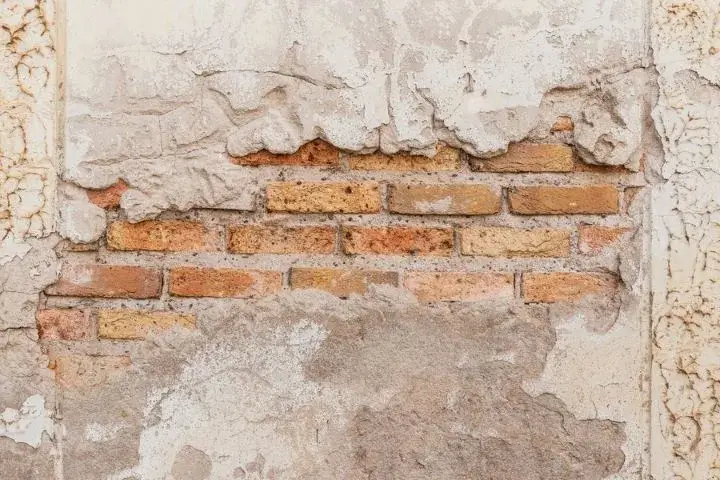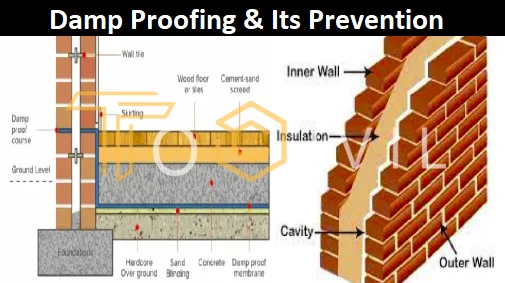What you gain from hiring a mould treatment newcastle professional
What you gain from hiring a mould treatment newcastle professional
Blog Article
Exploring the Different Methods and Solutions for Effective Damp Proofing
Dampness in buildings poses significant difficulties to both architectural honesty and interior air high quality. Different methods and services have actually arised to fight this prevalent problem. From traditional damp-proof membranes to ingenious chemical therapies, each technique supplies distinct benefits. Recognizing these choices is important for effective dampness control. Nonetheless, choosing the appropriate solution relies on details structure conditions and requirements, triggering more exploration right into one of the most efficient wet proofing methods readily available.
Understanding the Root Causes Of Wetness
Dampness can occur from numerous sources, comprehending these causes is important for effective removal. Frequently, moisture originates from 3 primary sources: climbing damp, permeating damp, and condensation. Rising moist occurs when groundwater travels up-wards via permeable materials, such as brick or rock, frequently due to an absence of an efficient obstacle (damp removal newcastle). Penetrating wet is commonly brought on by exterior elements, including roofing leakages, faulty seamless gutters, or damaged wall surfaces, enabling water to penetrate a residential or commercial property. Condensation, on the other hand, results from excess moisture in the air, often aggravated by inadequate ventilation and temperature level distinctions, bring about water droplets basing on surfaces. Determining these underlying concerns is crucial, as each type of dampness needs a customized strategy for removal. Correct evaluation aids in determining the most effective options, inevitably securing the architectural honesty of a building and boosting interior air quality
Traditional Damp-Proof Membranes

Chemical Damp-Proofing Solutions
Chemical damp-proofing options provide a cutting-edge strategy to stop dampness invasion in buildings. These methods normally include the application of liquid chemicals that permeate masonry and develop an obstacle versus increasing damp. Generally utilized chemicals include silanes, siloxanes, and other water-repellent agents that react with surface products to create a hydrophobic layer.The application procedure usually needs exploration openings right into the walls, infusing the chemical solution, and enabling it to cure. This approach is specifically useful for older frameworks where typical damp-proof membrane layers might be not practical. Chemical damp-proofing can be less turbulent and more economical than comprehensive remodelling projects.While effective, these services depend on appropriate application and environmental conditions for peak performance. mould treatment newcastle. Routine maintenance and monitoring are necessary to guarantee the durability of the damp-proofing therapy. In general, chemical damp-proofing stands for a versatile choice for securing structures versus moisture-related damages
Tooth Cavity Wall Building And Construction Techniques
Tooth cavity wall surface building methods use various benefits, particularly in wetness control and energy efficiency. By integrating an air space in between two layers of masonry, these wall surfaces successfully mitigate water ingress while enhancing insulation. This mix not only secures structures from dampness however additionally adds to minimized power usage.
Advantages of Dental Caries Walls
When taking into consideration reliable damp proofing approaches, the benefits of dental caries walls attract attention plainly. Tooth cavity walls are composed of two separate layers, producing an air space that efficiently reduces dampness penetration. This layout lessens the risk of dampness, as the external wall surface works as a barrier against rain and water ingress. In addition, dental caries walls improve thermal insulation, which adds to energy performance by decreasing warm loss. They also provide sound insulation, aiding to develop a quieter indoor environment. In addition, the air void allows for air flow, which assists in dampness control and minimizes the probability of mold growth. These advantages not only boost the overall convenience of a structure but also add to its durability and architectural honesty.
Dampness Control Methods
Reliable wetness control strategies are critical in dental caries wall surface construction to guarantee long-term defense against dampness. One primary method entails the consolidation of weep holes, which facilitate water drainage from the cavity, avoiding buildup. Additionally, using breathable membranes can assist manage wetness levels while enabling entraped vapor to leave. Proper placement of insulation is likewise critical, as it ought to not obstruct drainage paths. Additionally, guaranteeing that the external leaves of the dental caries wall surface are created with waterproof materials enhances overall sturdiness. Routine maintenance checks are necessary to recognize any kind of clogs or damages early, securing the framework's honesty. Inevitably, a mix of these strategies creates a robust defense versus wetness breach in cavity walls.
Insulation and Power Efficiency
Insulation plays a vital role in improving energy performance within dental caries wall surface construction. By including shielding materials, these walls create a thermal obstacle that decreases warmth loss and lowers energy consumption. Reliable insulation not only assists keep a stable indoor temperature however additionally alleviates the threat of dampness, as it prevents condensation within the wall surface dental caries. Numerous techniques, such as using inflexible foam boards or mineral woollen, can be utilized to attain excellent insulation performance. Furthermore, correct installment is essential to assure that voids and voids are decreased, which can or else endanger energy efficiency. Ultimately, a well-insulated cavity wall contributes considerably to total sustainability and lowers cooling and heating prices for property owners.
Outside Damp Proofing Techniques
External moist proofing methods are essential for safeguarding structures from dampness infiltration. 2 effective techniques include the application of water resistant membrane layers and the installation of French drains. These solutions aid alleviate water build-up and preserve the honesty of buildings.
Waterproof Membrane Layer Application
While various approaches exist for avoiding wetness access, the application of waterproof membranes remains a very reliable external damp proofing method. These membranes are generally made from materials such as polyethylene, rubber, or modified bitumen, giving a robust obstacle against water infiltration. The installment procedure entails applying the membrane layer to the outside surfaces of foundations or walls, making sure complete insurance coverage to avoid leakages. Correct attachment and securing at joints are important to maximizing efficiency. Water resistant membrane layers can be applied in various forms, consisting of fluid finishes and sheet membranes, permitting flexibility based upon the particular demands of the structure. This mould removal newcastle technique not just secures structures from moisture however additionally improves their durability and architectural integrity.
French Drainpipe Setup
One reliable technique for handling groundwater and stopping wetness build-up around a structure's foundation is the setup of a French drainpipe. This water drainage system consists of a trench loaded with gravel and a perforated pipeline that reroutes surface water away from the foundation. Proper installation calls for careful planning, making sure that the drain inclines far from the structure to help with suitable water circulation. In addition, the location of the drain is important; it must be positioned in areas prone to merging or excess dampness. Normal maintenance, consisting of clearing debris from the gravel and ensuring the pipeline continues to be unhampered, is vital for long-term efficiency. Ultimately, a well-installed French drainpipe can significantly lower the risk of water-related problems in cellars and structures.
Inside Waterproofing Techniques
Inside waterproofing strategies are vital for protecting a building's inside from moisture infiltration and possible water damage. These methods normally involve the application of specialized materials and techniques designed to create a dampness barrier within the structure. One common method is the usage of water resistant finishings or sealants on walls and floorings, which avoid dampness from permeating surfaces.Additionally, setting up interior drain systems, such as sump pumps, can effectively handle water build-up in cellars and creep areas. One more approach involves the usage of vapor barriers, which are set up to hinder wetness activity from the ground into living spaces.Moreover, dealing with any type of fractures or spaces in walls or structures with ideal sealants assures an extensive defense against water intrusion. By implementing these indoor waterproofing approaches, building owners can significantly minimize the risk of mold and mildew development, architectural damage, and various other moisture-related problems. Correct implementation of these methods is essential for long-lasting protection and structure integrity.
Regular Maintenance and Inspection Practices
Routine upkeep and assessment methods are essential for guaranteeing the long-lasting efficiency of wet proofing services in any type of building. Routine checks enable homeowner to identify early signs of wetness invasion, such as peeling paint, mold and mildew development, and moldy odors. These signs can indicate underlying issues that require prompt attention.Inspections must be performed at the very least yearly, concentrating on prone areas like cellars, creep areas, and outside wall surfaces. During these analyses, homeowner must analyze sealers, drainage systems, and air flow to validate they work correctly.Additionally, keeping downspouts and gutters is vital, as clogged systems can bring about water build-up near the structure. Carrying out a normal maintenance schedule, along with prompt repair services, can significantly expand the lifespan of moist proofing procedures and secure the structural stability of the building. Aggressive steps ultimately add to the general health and wellness and safety and security of the living setting.
Often Asked Concerns
How Long Does Damp Proofing Normally Last?
The period of moist proofing effectiveness varies, normally lasting in between 20 to 50 years. Variables such as application high quality, ecological problems, and maintenance methods significantly affect the durability of the damp proofing treatment.

Can I Damp Proof My Home Myself?
The private pondered the expediency of DIY damp proofing. With correct study and the ideal materials, it is feasible. Nevertheless, they additionally recognized the value of specialist support to guarantee lasting effectiveness and prevent future problems.
What Are the Signs of Ineffective Damp Proofing?
Indications of ineffective wet proofing consist of consistent mildewy odors, noticeable mold development, peeling paint, wet patches on walls, and wood degeneration - damp specialist newcastle. Homeowners need to address these concerns without delay to avoid additional damage and health and wellness issues
Does Damp Proofing Affect Indoor Air Quality?

Exactly How Much Does Expert Damp Proofing Expense?
Expert damp proofing costs vary substantially, generally ranging from $1,000 to $5,000 depending on the building's size, the level of the wet problem, and selected approaches. Each circumstance calls for a tailored analysis for accurate prices. Typically, moisture originates from three primary resources: increasing moist, permeating damp, and condensation. When taking into consideration efficient moist proofing techniques, the advantages of tooth cavity wall surfaces stand out plainly. Exterior moist proofing approaches are vital for shielding frameworks from moisture infiltration. While different approaches exist for preventing dampness access, the application of water resistant membrane layers continues to be an extremely effective external moist proofing method. Indications of ineffective moist proofing consist of consistent stuffy smells, visible mold development, peeling paint, moist spots on walls, and wood degeneration.
Report this page